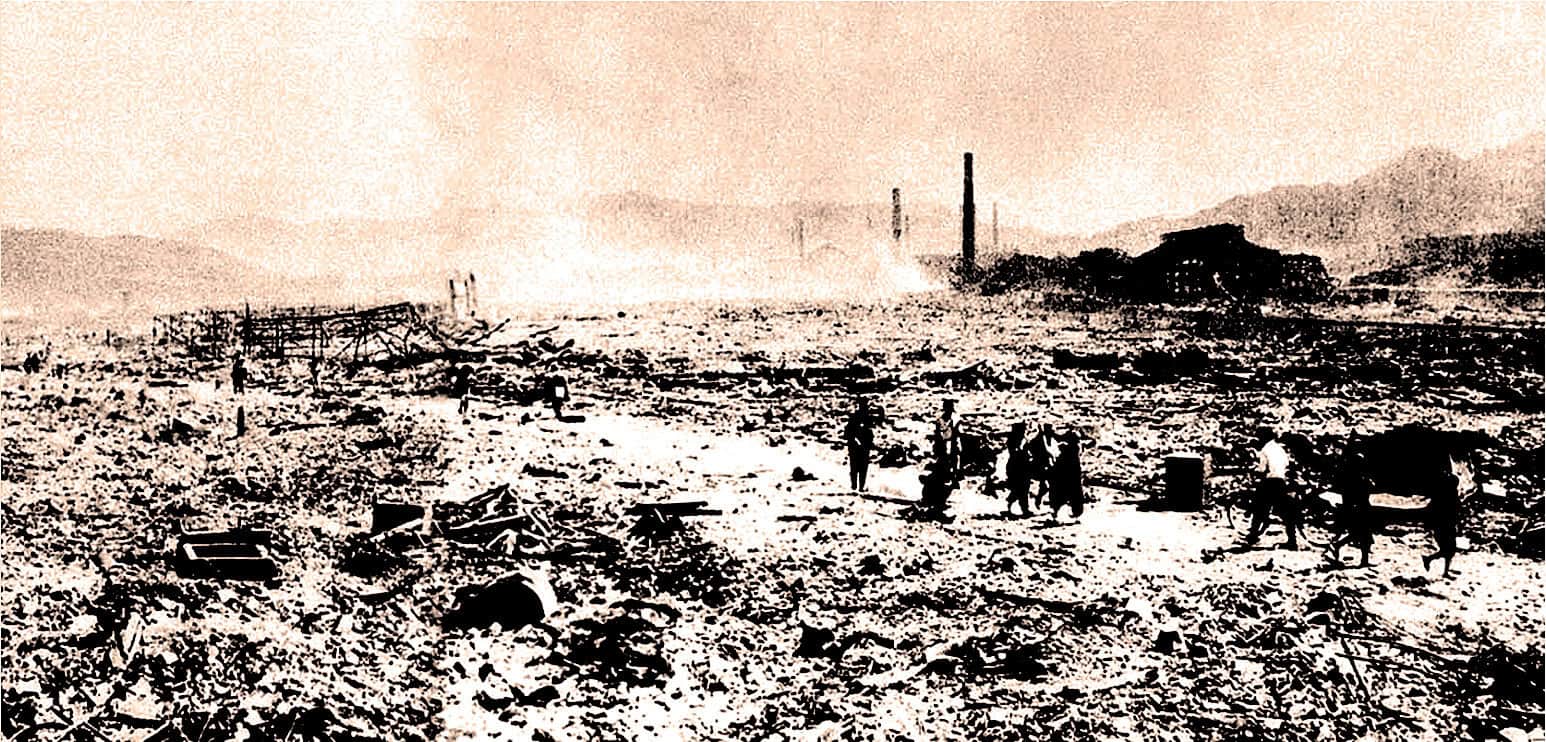
August 9, 1945 – News reports via Shortwave to Mutual from points in the Pacific – Gordon Skene Sound Collection –
August 9, 1945 – news for this day. even though overshadowed by the dropping of a second Atomic Bomb on Nagasaki in Japan, nevertheless made considerable headlines when it was learned Russia had declared war against Japan. The Soviet Union was now part of the Allied force and the news made it all the more apparent that World War 2 would be over soon.
Still, there was fighting going on – After the bombing of Hiroshima on August 6, workers on Tinian island labored intensely to put the finishing touches on the Fat Man bomb and prepare it for use over Nagasaki. This was a plutonium implosion device of far greater complexity than the Little Boy bomb used at Hiroshima, which used uranium-235 in a fairly conventional explosive mechanism. The scientists and ordnance experts at Los Alamos had agonized for years over how to use plutonium in an atomic weapon, and Fat Man was the result.The decision to use Fat Man just days after the explosion of Little Boy at Hiroshima was based on two calculations: the always-changeable Japanese weather—the appearance of a typhoon or other major weather event could force deployment to be postponed for weeks—and the belief that two bombings following in quick succession would convince the Japanese that the Americans had plenty of atomic devices and were ready to keep using them until Japan finally surrendered. Reports of approaching bad weather convinced the Americans to drop the next bomb on August 9.
The commencement of the Soviet invasion fell between the US atomic bombings of Hiroshima on 6 August and Nagasaki on 9 August. Although Stalin had been told virtually nothing of the US and UK’s atomic bomb program by Allied governments, the date of the invasion was foreshadowed by the Yalta agreement, the date of the German surrender, and the fact that, on 3 August, Marshal Vasilevsky reported to Stalin that, if necessary, he could attack on the morning of 5 August. The timing was well-planned and enabled the Soviet Union to enter the Pacific Theater on the side of the Allies, as previously agreed, before the war’s end. The invasion of the second largest Japanese island of Hokkaido was originally planned by the Soviets to be part of the territory taken.
At 11 pm Trans-Baikal time on 8 August 1945, Soviet foreign minister Vyacheslav Molotov informed Japanese ambassador Naotake Satō that the Soviet Union had declared war on Japan, and that from 9 August the Soviet Government would consider itself to be at war with Japan. At one minute past midnight Trans-Baikal time on 9 August 1945, the Soviets commenced their invasion simultaneously on three fronts to the east, west and north of Manchuria.
Here are a series of shortwave reports, made for Mutual by correspondents in the Far East – between Guam and Chungking on August 9, 1945. Most were broadcast but some were not – this is what the day was sounding like.
As you know, we’ve suspended our ads in order to make Past Daily a better experience for you without all the distractions and pop-ups. Because of that, we’re relying more on your support through Patreon to keep us up and running every day. For as little as $1.00 a month you can make a huge difference as well as be able to download all of our posts for free (news, history, music). You’ll see a banner just below. Click on that and become a subscriber – it’s easy, painless and does a world of good.





